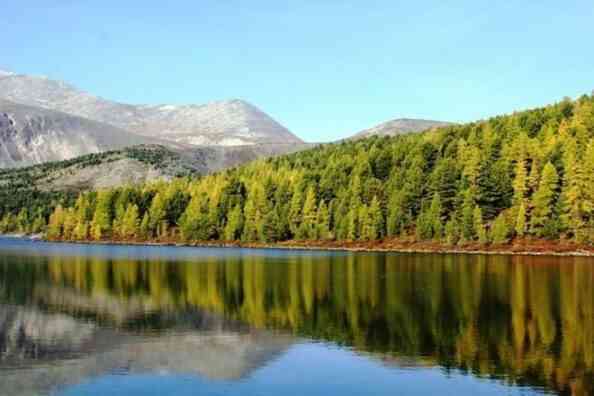Without forests, there would be no oxygen, and without oxygen, there would be no life on Earth in the form it is which we know it. Taiga — essential element of our planet’s ecosystem. Covering a huge area, these dense forests turn huge amounts of carbon dioxide into breathable air every day.
Interesting facts about Taiga
- On the territory of Russia, the taiga was formed even before the onset of glaciers (interesting facts about Russia).
- The taiga is understood as a landscape zone with marshy soil, covered with a dense forest, mainly of coniferous trees. In Russia, this zone occupies the largest area of all existing ones.
- The taiga is the largest land-based biosystem on the planet. Taiga forests spread over an area of 15 million square kilometers.
- In the western part of Russia, its width is 800 km, and in the west and east of Siberia, this belt of forests expands to 2150 km.
- In Europe, taiga forests almost entirely cover the Scandinavian Peninsula and Finland.
- The southern border of the taiga runs along the northern part of the Japanese island of Hokkaido, and the northern tip of the forests is at the level of the Taimyr Peninsula.
- Taiga is one of the longest climatic zones in the world in terms of the number of geographical latitudes it occupies.
- In the taiga forests, more than 300 species of birds build nests and incubate offspring, many of which are rare and endangered species (interesting facts about birds).
- Due to the harsh climate, reptiles are almost never found in the taiga – in the taiga forests on the territory of Eurasia, they are represented by only two types of snakes and one variety of lizards (interesting facts about snakes).
- In winter, most of the animals that inhabit these regions, including mammals, hibernate.
- Nowhere in the world is there such a large number of fur-bearing animals as in the taiga forests.
- Due to human intervention, many species of animals that traditionally inhabited these forests began to disappear from the taiga, and new inhabitants, such as black grouse and common hamsters, take their place.
- The Eurasian taiga is one of the most important ecosystems on the planet, so how the amount of carbon and oxygen in the layer of the atmosphere closest to the Earth depends on it.
- For the protection and study of taiga landscapes in Russia, the Barguzinsky Reserve was created – now it is located on the territory of Buryatia, and since 1996 it has included almost the entire water area of Lake Baikal. This is the oldest nature reserve in the country and the only protected natural area created before the revolution.
- More than 32,000 species of insects live in the taiga on Canadian territory (interesting facts about Canada).
- Taiga in winter freezes down to -50 degrees, and in summer the temperature in the forests can reach +35.
- Until the end of the 19th century, the taiga was considered unsuitable for agriculture or human settlement. However, then a special decree was issued on the study of these territories, and the researchers quickly established the fallacy of these statements.
- The natural habitats of the reindeer and red deer are located in the taiga forests.
- The taiga is not without reason coniferous forest – the conditions for the growth of other tree species in this area are no more than 40 days a year.
- During the warm season, over 800 species of flowers bloom here, some of which are not found anywhere else on the planet.
- The taiga makes up one third of the total forest area of the Earth.
